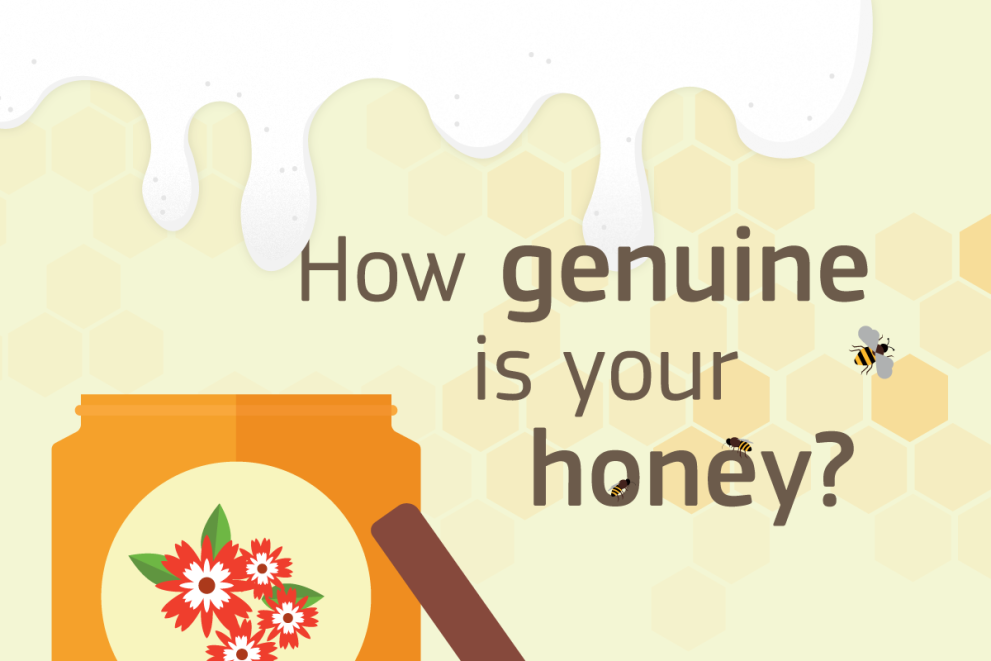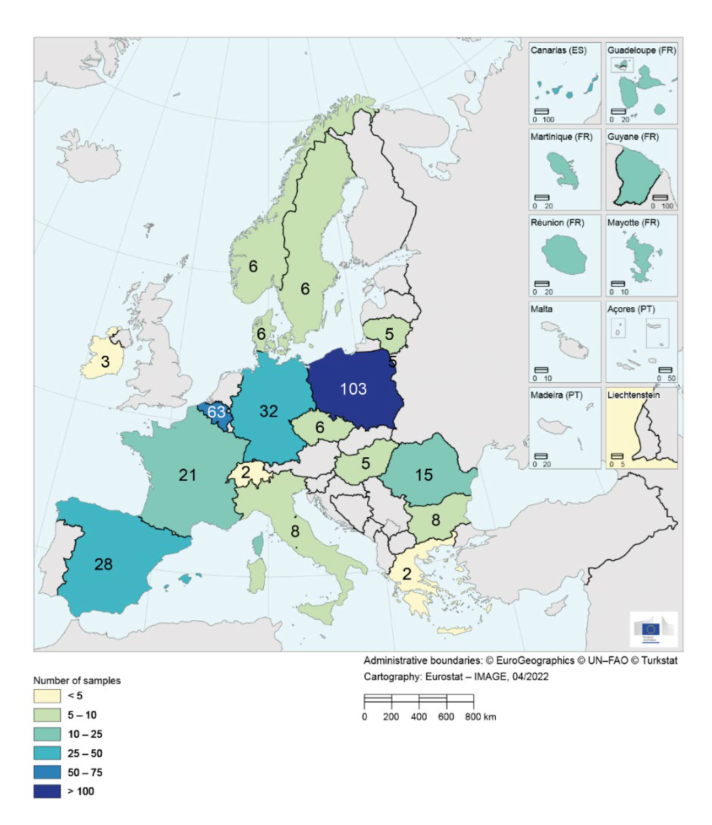
Today, the results of an EU-wide coordinated action “From the Hives” on honey contaminated with sugars are published. Sixteen EU Member States plus Switzerland and Norway embarked on a testing campaign. A total of 320 honey consignments - imported from 20 countries - were randomly sampled between November 2021 and February 2022.
Samples of these shipments were then sent to the JRC for analysis, which identified that 147 samples (46%) were suspicious to be adulterated, which means non-compliant with the general provision of the EU Honey Directive. It requires that ‘…honey shall not have added to it any food ingredient, including food additives, nor shall any other additions be made other than honey’.
However, the current analytical methods are not yet developed enough at international level and a simple test is not sufficient to detect adulteration. A proper follow-up of suspicions is necessary.
Therefore, the coordinated action also included a collection of traceability information and then investigations at the place of import, processing, blending, and packing.
The results are published in the report EU Coordinated action to deter certain fraudulent practices in the honey sector.
Better detection capability
The JRC applied a new set of advanced testing methods. In previous studies, different methods were used to detect with sufficient sensitivity sugar syrups made of maize starch or sugarcane, but it was less effective in detecting other types of syrups tailored to mimic honey.
The study indicates that such sugar syrups made from maize are now rarely used to extend honey. They have been replaced by syrups made mostly from rice, wheat or sugar beet.
Improved, harmonised and generally accepted analytical methods are needed to increase the capability of official control laboratories to detect honey adulterated with sugar syrups. The JRC is working on further developing these methods.
Attractive fraud opportunities
The important price difference between authentic honey and sugar syrups explains why fraud in honey is highly profitable. Figures speak for themselves: the EU average unit value for imported honey was 2.32 €/kg in 2021, whereas sugar syrups made from rice are available at around 0.40 – 0.60 €/kg.
In addition, the difficulty to detect the extension of honey with syrups makes the honey sector even more attractive for fraudsters.
Although the adulteration of honey may not present a direct threat to public health, it remains an unfair practice for both honest honey producers and consumers.
Background information
The action was initiated and coordinated by the Directorate-General for Health and Food Safety (DG SANTE) of the European Commission and implemented by the members of the EU Food Fraud Network who received the technical assistance of the Joint Research Centre (JRC) and investigative support of the European Anti-Fraud Office (OLAF).
The EU Honey Directive, currently under revision, will allow including provisions to protect even better the interest of consumers and honest producers by mandating a detailed labelling of the geographical origin of honey.
Related links
EU Coordinated action to deter certain fraudulent practices in the honey sector
EU coordinated action “from the hives”
(No) sugar for my honey: OLAF investigates honey fraud
Video: From the hives
Details
- Publication date
- 23 March 2023
- Author
- Joint Research Centre
- JRC portfolios




